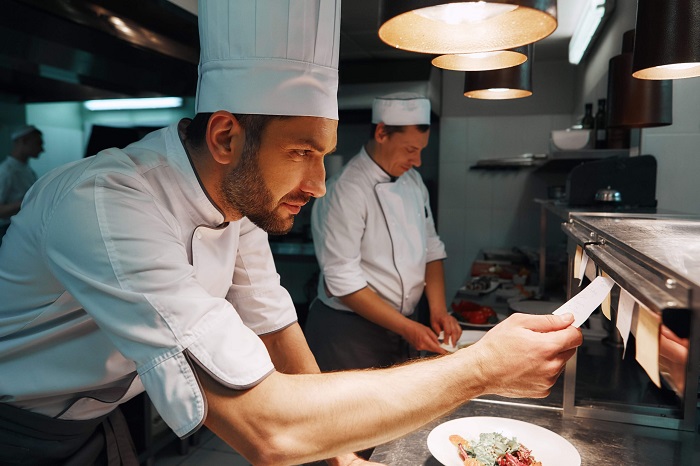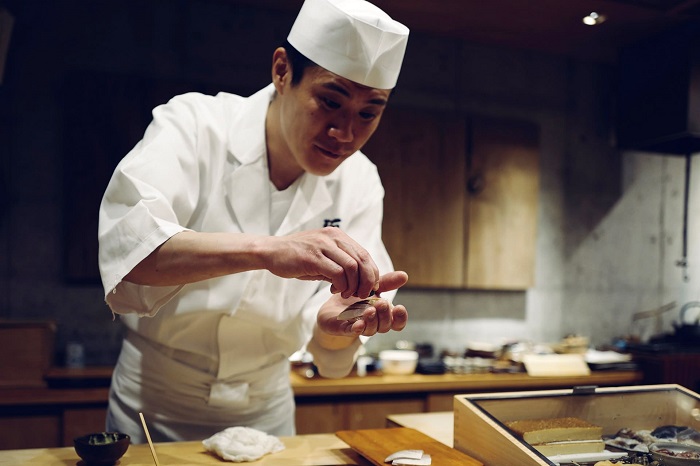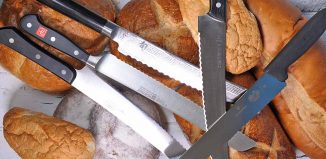The uniforms that you wear to work can have a huge impact on your productivity, affecting from the way you feel to how well your work is done. When they’re appropriate for the profession, they help workers identify themselves as professionals and take pride in their appearance. They also reflect a company’s brand or values, which can boost morale and motivate employees.
The right garments will make any job easier because they create a sense of belonging, contribute to good mental health, and even promote cleanliness! Whether you are in the corporate world, the construction industry, medical field, or culinary business, appropriate attires are an essential part of your job. I mean, don’t we all love the sleek look of a dapper uniform? All work attire has a certain appeal to it, but chef uniforms certainly stand out!
We’re all familiar with the gorgeous, crisp white clothing, but have you stopped to wonder what exactly makes it so special? How did these garments become what they are today? There are so many layers to the outfit, so let’s peel this onion and get to the core of culinary etiquette and the honour of wearing chefs’ whites!
Guide to Chef Uniforms

Chefs are a passionate bunch. They’re creative, they’re clever, and they take their trade seriously. But the uniforms? They’re an indication of professionalism, a badge of honour in the name of achievements, and appropriate attire in the culinary industry.
In this guide we’ll explore chef uniforms from head to toe: what is the significance behind the white attire, what the essential pieces in the outfit are, and how to find the right one for your occupation in the kitchen.
Throughout history, chefs have always held a noble and trustworthy title. Rulers and royalty believed that chefs had to be selected carefully, as they held the sacred position of safely feeding everyone with healthy meals and delicacies. And this is where the idea of white garments stems from. White has always been associated with cleanliness and purity, and that’s exactly what a chef’s clothing was meant to represent.
Although the attire we know now has undergone a lot of modifications since the first complete model in 1822, the outfit has a close resemblance to the original sketch. Now, the chef clothing is composed of a white top hat, pants, double-breasted jacket, and an apron tied around the waist. Apart from professionalism, this kind of specialised apparel is essential in the kitchen for functionality and protection of the wearer. So, let’s go over what each component of it means:
The Infamous Hat
The chef’s hat, or, in culinary lingo, the toque, is a tall white hat, meant to prevent hair from getting into the food and even help with absorbing sweat. The origin of the hat is still a topic of debate, as there are diverse versions throughout each culture and century. Some tales even tell the story of hats being the equivalent of royal crowns, minus the jewels. Nevertheless, hats are mandatory for hygienic purposes in the kitchen. Plus, the height and pleats of the hat show off the level of expertise the chef holds, which is a primary indicator of their achievements.
The Jacket
Apart from the hat, the jacket is the most noticeable piece of clothing in the chefwear. Chef’s jackets are typically made from thick cotton or polyester, and are double-breasted to offer ultimate protection against heat and spills. Thanks to the double layers, chefs can hide any spills on the front of the jacket by reversing the inner flap. Chef’s jackets include intricate pockets for keeping small equipment like thermometers at hand. The buttons are other amazing details. By their colour, staff can differentiate between students and head chefs.
The Pants
This portion of the outfit may seem like the most mundane one, but it’s just as essential (maybe even more so) as any other piece. The chef’s pants have to be durable, flexible, and comfortable before anything else. They need to provide easy movement and lightness, so chefs don’t have to feel constricted while running around a busy kitchen. Another key feature for them is their professional appearance. Since they sustain more spills and stains, the industry advises opting for a striped or checkered style to hide any imperfections.
The Apron
A chef’s apron needs to be functional and versatile. It shouldn’t only protect clothing from stains and hot liquids, but also bind the whole uniform closer to the body. This prevents getting caught up in fabric while managing a kitchen. Aprons are a great and affordable investment, as they are by far easier to maintain and clean. In addition, they are cheaper to replace than a whole chef’s outfit. In terms of colour and pattern, aprons are usually white or black and match perfectly with the whole outfit.
The Benefits of Chef’s Attire

Wearing a chef’s hat will not only help you look the part, but also maintain a certain level of professionalism and avoid cross-contamination. Normal clothes are a safety hazard as they can transfer dirt or hair into a pristine kitchen, and compromise the quality of the food. But apart from that, wearing appropriate chef uniforms while cooking brings an array of benefits, including:
• Personal comfort for the staff
• Protection from hot food and liquids
• Easy identification of staff
• Insulation and breathability for the body
• Boosted morale of the staff
• Establishment of the restaurant’s brand
• Promotion of hygiene
Kitchen uniforms aren’t any ordinary piece of clothing you can throw on and call it a day. They are the highest sign of professionalism and convey the discipline and hard work of the staff. Chefs devote many years and patience to earning their prestigious titles, so putting on crisp white clothing for the first time is deemed a “coronation” process and a rite of passage into the reputable world of culinary arts. Every experienced chef needs their own attire, so providing it at your business guarantees a higher level of elegance and respect in the industry.












